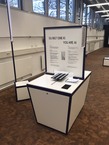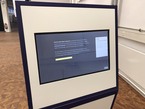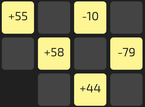Interactive Traffic Simulation
program
Emeği Geçenler
Web sitesi
Katkıda Bulunanlar
Traffic and congestion phenomena belong to our everyday experience. In our simulation, you have the possibility to control traffic and create your own traffic jam. Find out how to trigger a traffic breakdown and how to resolve it. Observe how traffic jams can be seen as collective phenomena with waves propagating backwards from the bottleneck.
In our starting scenario, the ring road, you experience how a traffic jam develops “out of the blue” by so-called traffic-flow instabilities: whenever a vehicle brakes a little bit, the follower takes a little time to adapt his or her speed to that of the leader. During this time, the gap may become smaller than the safety distance and the follower needs to brake even more to re-obtain it. This starts a “vicious cycle” eventually leading to a traffic wave propagating backwards.
- Play with the density slider to create even more waves at a higher density while no breakdown appears at lower densities.
- Make the drivers more responsive by increasing the maximum acceleration and observe how the traffic jam disappears. Are there some lessions learnt for your own driving style?
- Drag and drop an obstacle onto the road and notice how the moving traffic wave transforms into a standing one located at the newly created bottleneck.
In contrast to the ring road, the other scenarios are more realistic open systems with inflow and outflow. There, you can investigate the “three ingredients to make a (traffic) jam”: High traffic demand, a bottleneck on the road, and a final disturbance of the flow, e. g., by an abrupt lane change. The scenarios provide typical examples of bottlenecks like on-ramps, off-ramps, road-work sites, uphill sections, and a combination thereof.
Observe how a traffic jam forms at the bottleneck. You can accelerate its formation by clicking several times in the bottleneck zone creating additional flow disturbances. Upstream, the traffic jam will emit traffic waves while downstream, the congested region is fixed by the beginning of the bottleneck. Now imagine you are one of the drivers approaching the bottleneck (you can mark them by clicking): The driver encounters several traffic waves before reaching the bottleneck. Since the driver typically cannot see the bottleneck when encountering the first wave, he or she might think that there is a “phantom traffic jam”. However, you know better: The waves are emitted by the congestion formed at the bottleneck a while ago.
Finally, in the “deviation scenario”, you can play a game. Send some of the vehicles onto the deviation route in order to avoid or delay the traffic flow breakdown on the main route, but don’t do too much. Who can bring all of the vehicles through the simulation the fastest?












